Highlands and Islands Enterprise Look To Hi-tech To Improve Fish Industry
15th January 2020
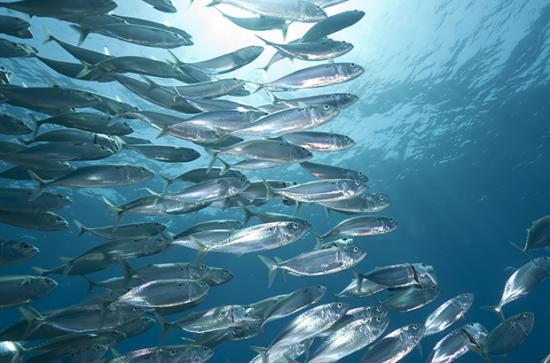
The transnational project, called ‘DisruptAqua', is worth €155,000 and is being supported by the European Union's Northern Periphery and Arctic Programme (NPA) 2014-2020.
As the demand for fish is increasing, the innovative use of existing and new technologies is required. This 18-month project will examine cutting-edge approaches to sustainably grow activity in our region's marine economy.
HIE will work with Nofima, the aquaculture, fisheries and food research institute, based in Tromsø, in North Norway and the Icelandic Ocean Cluster, which connects entrepreneurs, businesses and knowledge in the marine industries. They will research how new technologies can be used by businesses in the Highlands and Islands and elsewhere in the Northern periphery.
The NPA programme brings together the northernmost regions of Europe and the Arctic, including parts of Finland, Sweden, Ireland, Scotland, Northern Ireland and Norway, along with the whole of Iceland, Greenland and the Faroe Islands.
DisruptAqua will explore what specific ICT technologies such as blockchain, internet of things and artificial intelligence are most suitable for Arctic seafood businesses. The benefits and costs will be examined as well as better understanding the route to practical application.
Cabinet Secretary for the Rural Economy Fergus Ewing said:"This project promotes the innovative use of existing and new technologies, helping the industry meet the increasing demand for fish and supporting high skilled jobs. It will not only help seafood businesses in remote regions harness the potential of new technologies, it will also strengthen our trade and investment links with our Nordic neighbours."
Some research has already been carried out by partners on how new solutions could be used by businesses to add value to their products while ensuring sustainable production.
The NPA programme has clocked up hundreds of projects, on topics such as supporting SMEs with accessing innovation, developing new approaches to services delivery, tackling marine litter and supporting women entrepreneurs in sparsely populated communities. The programme aims to generate vibrant, competitive and sustainable communities across Europe's most remote regions, through innovation, entrepreneurship and growth initiatives.
Its contribution to the sustainable development of the wider Arctic region is recognised by the Scottish Government, and the EU Commission.
Despite geographical differences, the large programme area shares common features, including low population density, low accessibility, low economic diversity, abundant natural resources, and high impact of climate change. This unique combination of features results in joint challenges and joint opportunities that can best be overcome and realised by transnational cooperation.
The DisruptAqua project has secured €85,000 from NPA, supported by the European Regional Development Fund (ERDF). HIE's contribution is €17,500 and brings in a further €35,500 from ERDF, and the rest made up from the other partners.
Elaine Jamieson, head of food and drink at HIE, said:"Aquaculture is an important economic activity in parts of the Arctic region. Scotland has been cooperating with our Northern Periphery and Arctic neighbours for over 25 years on addressing common challenges and opportunities and delivering tangible outcomes to businesses and communities in the sparsely populated areas in the north.
"We are especially delighted to lead on this project in light of the recently launched Scottish Government’s Arctic Policy Framework which recognises the need for even closer Scottish-Arctic cooperation.
"The model developed through this project will build on the existing knowledge across Scotland, Norway and Iceland. It will help ensure blockchain traceability of high value seafood products through the supply chain, from primary producer to consumer, ensuring value associated with provenance, environmental stewardship, quality and trust."
Note
What is Blockchain?
Blockchain technology enables distributed public ledgers that hold immutable data in a secure and encrypted way and ensure that transactions can never be altered. While Bitcoin and other cryptocurrencies are the most popular examples of blockchain usage, this "distributed ledger technology" (DLT) is finding a broad range of uses. Data storage, financial transactions, real estate, asset management and many more uses are being explored.
Related Businesses
Related Articles
Workforce North event spotlights Highland economy
EMPLOYERS and educators from across the Highlands have gathered to hear how a new initiative is aiming to transform the region's economy. Workforce North - A Call to Action brought together business leaders and teachers from primary and secondary schools from across the Highland Council area with a wide range of partners geared towards education, learning and skills development at Strathpeffer Pavillion.
Tartan challenge for UHI students offers £1,500 prize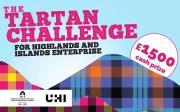
Students from across the University of the Highlands and Islands (UHI) partnership have been challenged to design a tartan and be in with a chance of winning a £1,500 cash prize. Highlands and Islands Enterprise (HIE) has launched THE COMPETITION to mark 60 years since the regional development agency (then named Highlands and Islands Development Board) was established in November 1965.
The Rural AI Roadshow - How AI can help your rural business thrive
Scotland's enterprise agencies (Scottish Enterprise, Highlands and Islands Enterprise, South of Scotland Enterprise) The Scottish AI Alliance and The Data Lab have joined forces to plan and deliver an inspiring and educational Rural AI Roadshow. There will be three, one day, Rural AI Roadshow conferences taking place across Scotland in January 2026.
Digital and AI innovation round-up for November
Scotland's digital future is accelerating, with AI and tech innovation transforming businesses. In this blog, HIE's Theresa Swayne shares November insights on funding, leadership, and how organisations can harness technology to stay ahead.
Reflections from SEWF Rural: global lessons for the Highlands and Islands social impact economy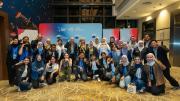
As we mark 60 years since the region's economic and community development agency was established, it's timely to reflect on the global aspects of our work on shaping rural futures. The recent Social Enterprise World Forum (SEWF) Rural Gathering in Sabah, Malaysia, welcomed changemakers from Australia, Ireland, India, Canada.
Scottish Entrepreneurial Ecosystem Guide - FREE To Download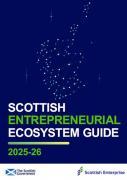
Scottish Enterprise's Entrepreneurial Ecosystem Guide provides an overview of more than 150 organisations that support new and growing companies in Scotland. The guide includes incubators, accelerators, specialist industry programmes, co-working spaces and networking organisations.
Funding approved for Wick Harbour port consultant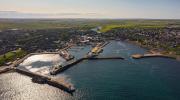
A specialist ports consultant has been appointed to develop a long-term strategic plan for Wick Harbour Authority (WHA) in Caithness. WHA has secured £47,775 from Highlands and Islands Enterprise (HIE) and the Nuclear Restoration Services, NRS Dounreay towards the cost of the services.
Enterprise and innovation agencies join forces in new framework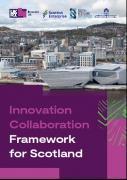
Scotland's three enterprise agencies have joined the UK's national innovation agency to agree a collaboration framework that aims to help Scotland become one of the most innovative small nations in the world. The Innovation Collaboration Framework for Scotland brings together Highlands and Islands Enterprise, Scottish Enterprise, South of Scotland Enterprise and Innovate UK with a commitment to support ambitious businesses to invest in research to drive economic growth, create good jobs and help tackle major societal and environmental challenges.
£3.4m HIE investment in Arnish Road, Stornoway
The project, led by the Stornoway Port Authority, will involve upgrading the full length of the 3.3km Arnish Moor Road. Highlands and Islands Enterprise (HIE) has approved a £3.4m contribution to a £7.2m public funding package for a major project to transform road access to strategic industrial and port sites on the Isle of Lewis.
As HIE reaches 60, new chair says best is yet to come
The newly appointed chair of Highlands and Islands Enterprise (HIE) says the region is on the threshold of a new era of economic growth. Angus Campbell's term as chair began officially on 1 November - 60 years to the day since HIE's forerunner, the Highlands and Islands Development Board (HIDB) opened for business with just six employees.
